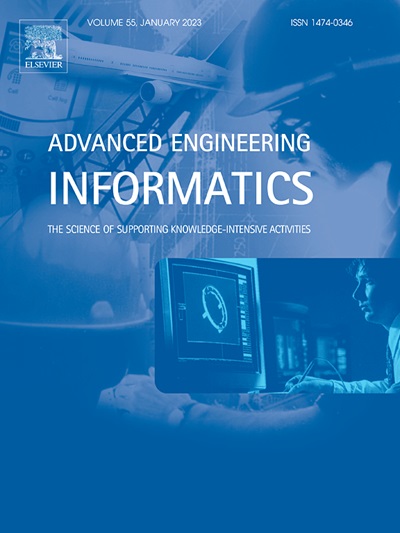Controllable and flexible residential floor plan layout design based on multi-agent deep reinforcement learning with layout prior size and similar experience abandon
IF 9.9
1区 工程技术
Q1 COMPUTER SCIENCE, ARTIFICIAL INTELLIGENCE
引用次数: 0
Abstract
Automated floor plan generation can significantly enhance the efficiency of designers and reduce associated design costs. Nonetheless, ensuring the model’s controllability and flexibility is crucial for its practical applications, presenting distinct challenges for current methods. This paper presents an automated residential layout design method utilizing multi-agent deep reinforcement learning (MADRL) to address the challenges of spatial variability and customization requirements in architectural layouts. By simulating the collaborative design process through multiple agents, the proposed method effectively accommodates diverse layout environments while ensuring valid and personalized designs. A refined reward system was developed to guide agents in generating rational room arrangements and meeting different custom constraints. Additionally, layout prior size (LPS) was proposed to address the size selection challenge, effectively reducing the action space and enhancing layout quality. To further improve diversity, a similar experience abandon (SEA) mechanism was proposed, allowing efficient experience interaction among agents and eliminating redundant exploration of similar layouts. Experimental results demonstrate the proposed method’s capability to generate valid floor plans and provide diversified layout options under various design inputs and custom tasks. Meanwhile, the agent achieves a design consistent with the real layout in 1187 episodes, demonstrating the method’s compatibility. This paper highlights the potential of MADRL in advancing the automation and efficiency of architectural layout design, offering a novel solution for the integration of flexibility and controllability in residential planning.
基于布局先验尺寸和相似经验抛弃的多智能体深度强化学习的可控柔性住宅平面布局设计
自动化平面图生成可以显著提高设计人员的工作效率,降低相关的设计成本。尽管如此,确保模型的可控性和灵活性对其实际应用至关重要,这对当前的方法提出了明显的挑战。本文提出了一种利用多智能体深度强化学习(MADRL)的自动化住宅布局设计方法,以解决建筑布局中空间可变性和定制需求的挑战。该方法通过多智能体模拟协同设计过程,在保证设计有效和个性化的前提下,有效适应多种布局环境。设计了一套完善的奖励系统,以指导代理人合理安排房间并满足不同的定制约束。此外,提出了布局优先尺寸(LPS)来解决尺寸选择难题,有效地缩小了动作空间,提高了布局质量。为了进一步提高多样性,提出了一种类似经验放弃(SEA)机制,允许智能体之间进行有效的经验交互,消除对相似布局的冗余探索。实验结果表明,该方法能够在不同的设计输入和自定义任务下生成有效的平面图,并提供多样化的布局选择。同时,agent在1187集中实现了与真实布局一致的设计,证明了该方法的兼容性。本文强调了MADRL在提高建筑布局设计的自动化和效率方面的潜力,为住宅规划中灵活性和可控性的整合提供了一种新的解决方案。
本文章由计算机程序翻译,如有差异,请以英文原文为准。
求助全文
约1分钟内获得全文
求助全文
来源期刊

Advanced Engineering Informatics
工程技术-工程:综合
CiteScore
12.40
自引率
18.20%
发文量
292
审稿时长
45 days
期刊介绍:
Advanced Engineering Informatics is an international Journal that solicits research papers with an emphasis on 'knowledge' and 'engineering applications'. The Journal seeks original papers that report progress in applying methods of engineering informatics. These papers should have engineering relevance and help provide a scientific base for more reliable, spontaneous, and creative engineering decision-making. Additionally, papers should demonstrate the science of supporting knowledge-intensive engineering tasks and validate the generality, power, and scalability of new methods through rigorous evaluation, preferably both qualitatively and quantitatively. Abstracting and indexing for Advanced Engineering Informatics include Science Citation Index Expanded, Scopus and INSPEC.
 求助内容:
求助内容: 应助结果提醒方式:
应助结果提醒方式:


